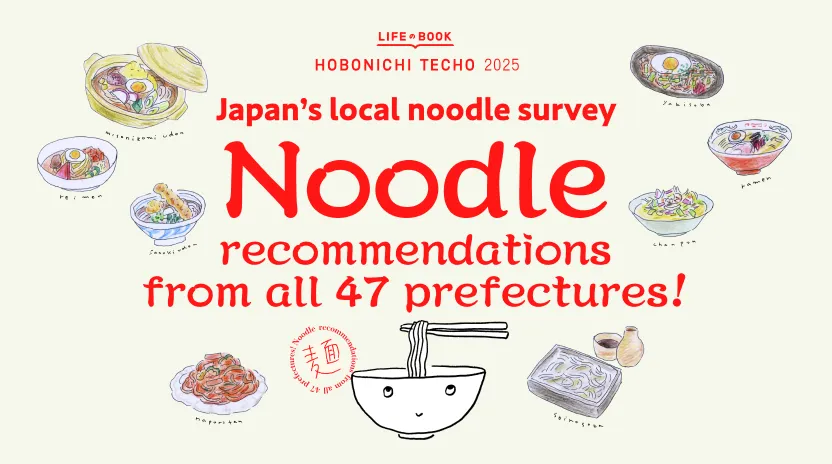Kumamoto

Recommended noodles from the 47 prefectures
Kumamoto Prefecture
We received a lot of comments about:
- Taipien
- Kumamoto Ramen
Share
2024-10-16
Illustration: Aya Ishimatsu (Shimarisu Design Center)

Kumamoto Prefecture
We received a lot of comments about:
2024-10-16
Illustration: Aya Ishimatsu (Shimarisu Design Center)
Taipien
Light glass noodles come with a thick broth of chicken stock. The popular ingredients are vegetables, kamaboko fish cakes, shrimp, and eggs. You can savor both the lightness and thickness in one dish. Among the many delicious restaurants, my favorite is the “Korantei.”
(Momokuri Sannen)
Kumamoto is well-known for Taipien. The simplest way to describe it could be “a thickened version of Champon, with glass noodles instead of the common noodles.” Some might want to call it glass noodle soup, but I believe it is more of a noodle dish than a soup. The silky glass noodles that have absorbed the soup are so delicious. And what is more, it is a healthy alternative to Champon since it contains vegetables, meat, and seafood. I go eat it every time I visit Kumamoto.
(Yu)
Although it looks like Champon, it uses glass noodles, and the soup is thick with a broth of chicken stock. It is a light-tasting yet satisfying dish!
(Guriko)
I am not from Kumamoto, but every time I have Taipien, I’m astonished at how delicious glass noodles can be.
(Banzai Sam)
It is a light-tasted and nutritious glass noodle dish featuring deep-fried eggs. It was after I moved to another prefecture that I came to know that Taipien was Kumamoto’s specialty.
(Aho)
I’ve had it at school lunches, thinking it was served throughout Japan. I didn’t know it was only available in Kumamoto! The silky glass noodles make it refreshing and tasty.
(Mayumikan)
Considering that the dish was born in local diners after the war and created happy moments for the people, I recommend restaurants that are run by the elderly. “Horaiken” and “Taishin” would be great options.
(Ushi)
Kumamoto Ramen
The tonkotsu pork bone broth, deep-fried garlic, and garlic oil are the features of Kumamoto Ramen. Among the famous restaurants such as “Kokutei,” “Komurasaki,” and “Keika,” my recommendation is Kokutei.
(Kumamoto Zaiju Taasan)
You can find various tonkotsu pork bone ramen in the Kyushu region. Among them, the ramen at “Tengaiten” in Kumamoto that has plenty of burned garlic in it is exceptional. Burned garlic is the key to Kumamoto’s ramen.
(Rena)
Tonkotsu ramen is a must when you visit Kumamoto. It is not too thick and highly recommended.
(Daidai)
“Ajisen Ramen” is the pride of Kumamoto, as they say, “Born in Kumamoto, loved around the world.” Even those who don’t like the Tonkotsu pork bone smell will fall in love with the aromatic flavor; no matter how many other ramen noodles you try, you would want to eat it again.
(Meganeneko)
Amakusa Champon
Nagasaki is famous for its Champon, but the Champon served at small restaurants in seaside towns like Amakusa is also very good. There are so many ingredients on top of the noodles that it is hard to get to the noodles! My recommendation is “Ozora Shokudo” in Amakusa.
(Eimi)
Nankan Somen
Every step of the production process is done by hand. The number of skilled workers is decreasing, which makes this hand-pulled somen even more valuable. It is characterized by the firmness and smoothness typical to hand-pulled noodles. You can enjoy it chilled dipping in noodle soup, make chilled Chinese noodles with it, or in hot noodle soup. I heard that they sometimes make somen sushi rolls from the somen noodles and Nankan Age deep-fried tofu.
(Minira)
Kumamoto
Taipien